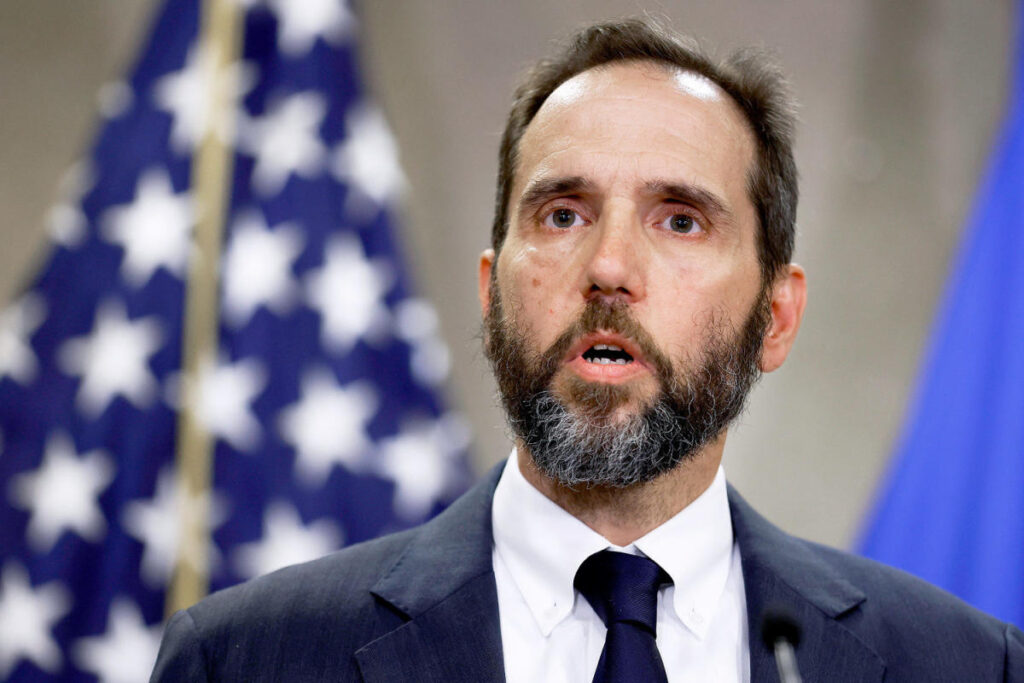In recent filings related to the January 6 attack on the U.S. Capitol, Special Counsel Jack Smith’s team contends that former President Donald Trump bears direct responsibility for the events that unfolded that day. Smith’s rebuttal to Trump’s efforts to dismiss the superseding indictment asserts that the allegations within the indictment clearly demonstrate Trump’s role in inciting the violent breach of the Capitol. Specifically, the filing states that Trump “willfully caused others” to obstruct the certification of President Joe Biden’s 2020 election victory by perpetuating false claims of election fraud and instilling “false hope” among his supporters. It highlights Trump’s actions, including pressuring then-Vice President Mike Pence and legislators regarding the acceptance of fraudulent electoral certificates, as foundational to the assertion that he sought to corruptly obstruct the certification process.
The prosecution argues that the indictment presents a straightforward case against Trump, indicating that he summoned his supporters to Washington D.C. on January 6 and directed them to march towards the Capitol. This was part of a strategy to pressure Pence and other legislators to reject legitimate electoral certificates in favor of fraudulent ones. Jack Smith’s team emphasizes that Trump’s claims of absence of legal or factual responsibility for the January 6 events are misguided. They point to evidence suggesting that Trump’s actions were intentionally aimed at obstructing the democratic process, thus connecting him directly to the riots that occurred as Congress was meeting to certify the results of the 2020 election.
Trump’s legal team, on the other hand, rebuts these claims, arguing that the indictment stretches legal interpretations beyond ordinary limits by attributing the actions and events of January 6 to him. They maintain that he cannot be held accountable for events he did not directly control and assert that he took proactive steps to protect against violence. Additionally, they allege that the indictment has a fundamentally political motive, aimed at vilifying Trump ahead of the impending election where he seeks a comeback after losing in 2020.
A particularly notable point raised in the prosecution’s filings is that Trump allegedly exploited the chaotic situation during the Capitol riots. Smith’s team cited an incident where, upon learning that Pence had to be evacuated for his safety, Trump responded with a dismissive “So what?” This allegation underscores the claim that Trump was more concerned with maintaining his grip on power than with the safety of his own vice president, illustrating a perception of culpability that the indictment aims to convey.
The legal exchanges between Trump’s lawyers and Smith’s team are taking place amid a politically charged atmosphere, with Trump’s potential candidacy in the upcoming election looming over the proceedings. The prosecution’s case hinges on whether the events of January 6 can be legally tied to Trump’s rhetoric and actions leading up to that day. The Supreme Court’s recent decision regarding presidential immunity has complications for Smith’s case, yet he maintains that the indictment holds up because it details how Trump allegedly disseminated lies regarding the election and pursued an agenda to retain power unlawfully.
The timeline for upcoming filings indicates that Judge Tanya Chutkan, overseeing the case, has allowed Trump’s team some extensions, pushing the due date for dismissing motions to after Election Day. Trump’s claims of presidential immunity will need to be addressed by early November, with the prosecution responding shortly after. Ultimately, the trajectory of this case could shift dramatically depending on the outcomes of the electoral landscape, determining if it goes to trial or remains in legal limbo as political platforms clash in the context of a national election.

